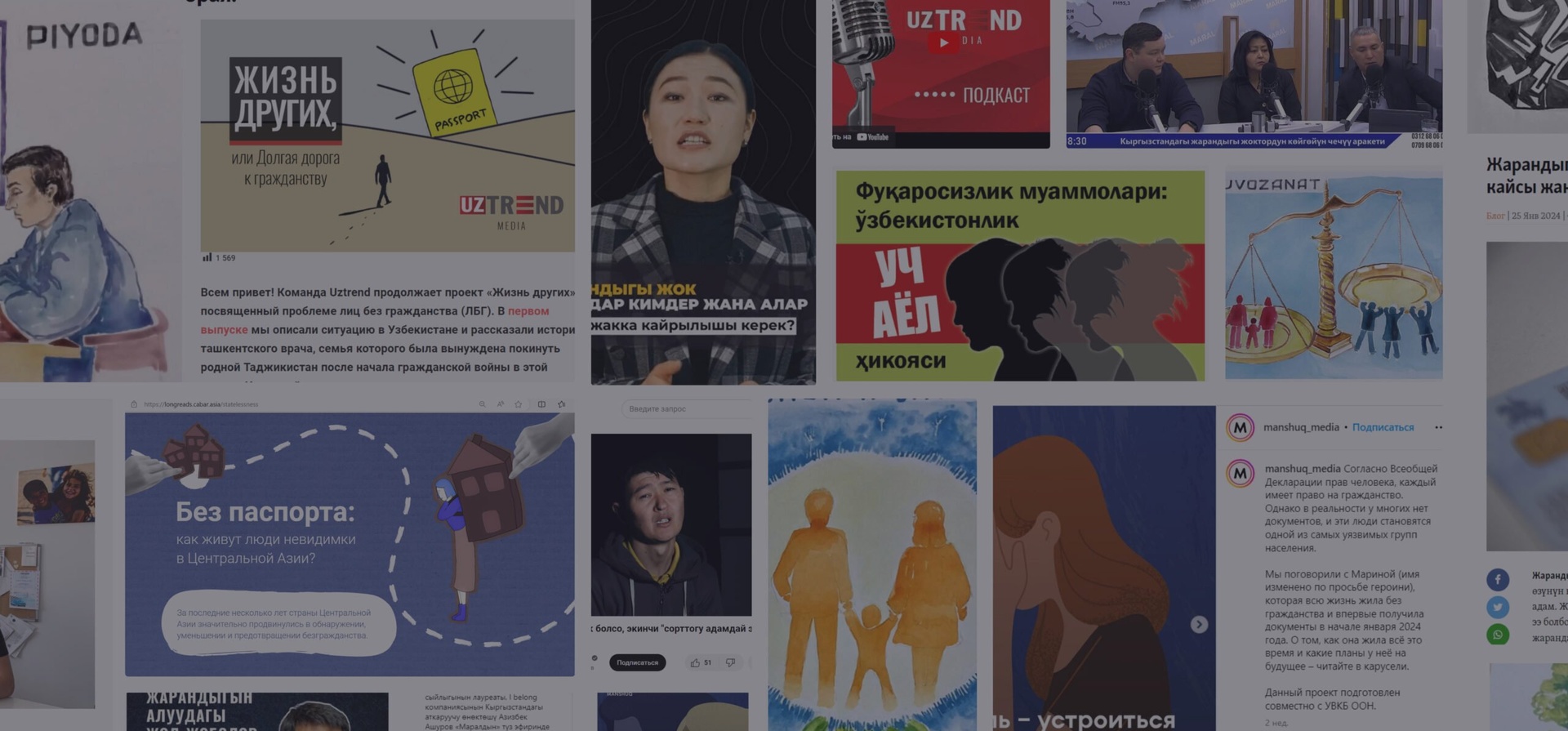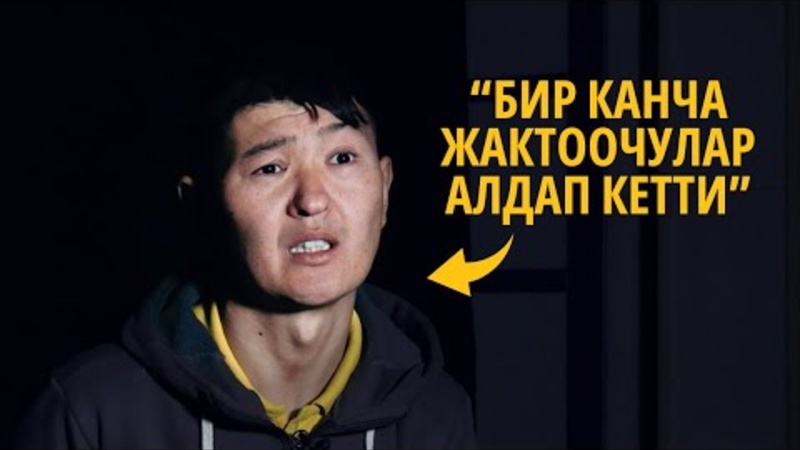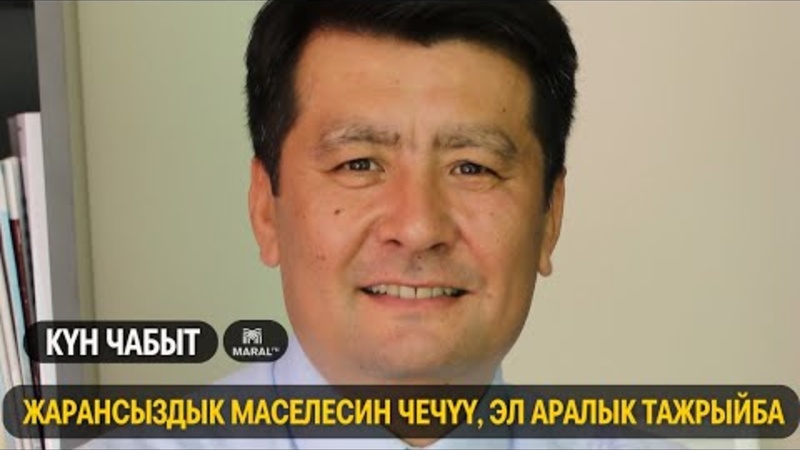Media outlets explore statelessness and the impact on Central Asian communities

Media outlets explore statelessness and the impact on Central Asian communities
With 2024 marking the final year of the global #IBelong Campaign to End Statelessness, governments, UN, civil society, academia and more are accelerating efforts to achieve its goals, eradicating statelessness once and for all.
Statelessness, the situation of not being recognized as a citizen by any country, affects millions of people around the world. Without a nationality, stateless people often cannot access the most basic of rights, including education, employment, healthcare, and freedom of movement.
Led by UNHCR, the “Sustainable development and addressing statelessness in Central Asia” contest for media ran from October 2023 to June 2024, with the aim of supporting quality, convincing and impactful reporting of the importance of addressing statelessness in Central Asia to achieve the Sustainable Development Goals (SDG10: reduce inequalities; SDG16: promote peaceful and inclusive societies; SDG17: strengthen the means for partnerships and cooperation).
The contest brought together media professionals, freelance journalists, videographers, photographers, graphic designers, writers, and other content creators, across Kazakhstan, Kyrgyz Republic, and Uzbekistan, providing financial grants to support implementation of winning proposals. The three winners and three special prize awardees created diverse works that include video-stories, illustrations, longreads, articles, radio programs, social media posts, interviews, and podcasts exploring the topic of statelessness in Central Asia.
The winners are:
“How do stateless people live in Uzbekistan”, Uzbekistan
Freelance journalist in Uzbekistan, Shoyira Nusratova delved into the lived experiences of stateless women with her project “How do stateless people live in Uzbekistan?” in Uzbek language, containing three written stories of stateless women – Khadija, Nigora, and Nargiza – and two podcasts allowing the audience to immerse themselves in the unique lives of these women.
“How can I become a national of Kyrgyzstan?”, Kyrgyz Republic
Maral TV, Television Broadcasting Company in the Kyrgyz Republic, created the Kyrgyz language multimedia project “How can I become a national of Kyrgyzstan?”, publishing a series of articles answering different questions including “Who are stateless persons and who should they address for help?”, and radio programs such as “Actions to solve the issues of statelessness in Kyrgyzstan”. Marat TV’s project included a video-story, “Without the nationality, you’re invisible”, published on YouTube and Facebook. Maral TV leveraged its presence on Instagram, Facebook and TikTok, to further amplify the importance of ending statelessness.
Maral TV interviewed Azizbek Ashurov, human rights lawyer, director of Ferghana Valley Lawyers Without Borders (FVLWB) and 2019 UNHCR Nansen Refugee Award winner, who has helped over 10,000 people to gain Kyrgyz nationality after they became stateless following the dissolution of the Soviet Union.
“The life of others", Uzbekistan
Online media outlet in Uzbekistan, UzTrend, developed the multimedia project “The life of others", focusing on real life stories of stateless people in Uzbekistan, issues they face, and solutions that can be provided to help them, in Uzbek and Russian languages.
UzTrend published a series of articles, including “Long road to nationality”, and an interview with UNHCR Protection Associate, Meiram Rakhimbekov, about “#IBelong Campaign: Kazakhstan’s experience”.
Special prize awardees are:
“How do stateless people live in Central Asia”, Kazakhstan
Cabar Asia (Central Asian Bureau for Analytical Reporting), a regional platform of the Institute for War & Peace Reporting, published “How do stateless people live in Central Asia?”, a Russian language article written in cooperation with UNHCR Statelessness Officer, Sergiu Gaina, and “No passport: How do invisible people live in Central Asia?” a Russian language longread with the detailed information on statelessness in Kazakhstan, Kyrgyz Republic, Tajikistan, and Uzbekistan.

“Don’t want to be a shadow”, Uzbekistan
Farogat Khurramova, an independent artist and teacher from Uzbekistan, created 15 illustrations to shed light on the issue of statelessness. Her collection, titled “Don’t want to be a shadow”, provides a visual representation of the difficulties faced by people without a nationality. Each illustration is accompanied by a researched explanation, in Uzbek and Russian languages.


“No one will protect you: how stateless people live in Kazakhstan”, Kazakhstan
Manshuq Media, a Kazakhstani online edition for modern women, published a series of six informative Instagram posts in Russian and Kazakh languages, exploring the many different ways that statelessness affects people in Kazakhstan and across Central Asia.
The “No one will protect you: how stateless people live in Kazakhstan” post, developed in collaboration with Denis Jivaga, Deputy Director of UNHCR partner Kazakhstan International Bureau for Human Rights and Rule of Law (BHR), is about how stateless people in Kazakhstan can get help.
The “My goal is to get an official job” post is about life without a nationality:
As of January 2024, over 37,000 people are known to be stateless in Central Asia. A majority are ex-citizens of the former Soviet Union, or their descendants, who have not yet acquired or confirmed citizenship of the independent States. Others are born stateless or become stateless due to gaps in nationality laws, international migrations, and mixed marriages.
As Central Asia strives to achieve the Sustainable Development Goals, it is critical for the whole of society – including governments, communities, academia, and the media – to come together to end statelessness, amplifying the voices of stateless people, and ensuring no one is left behind







